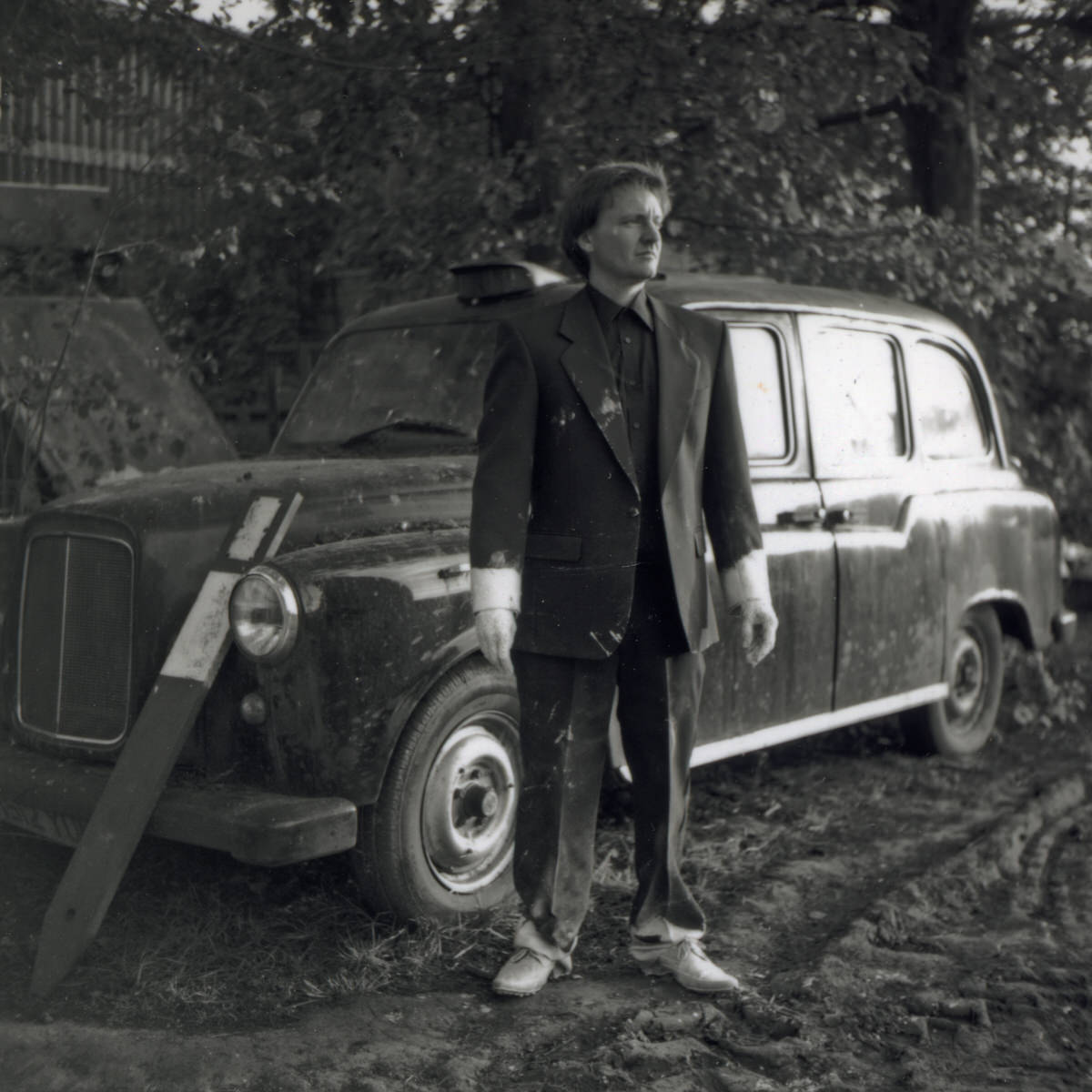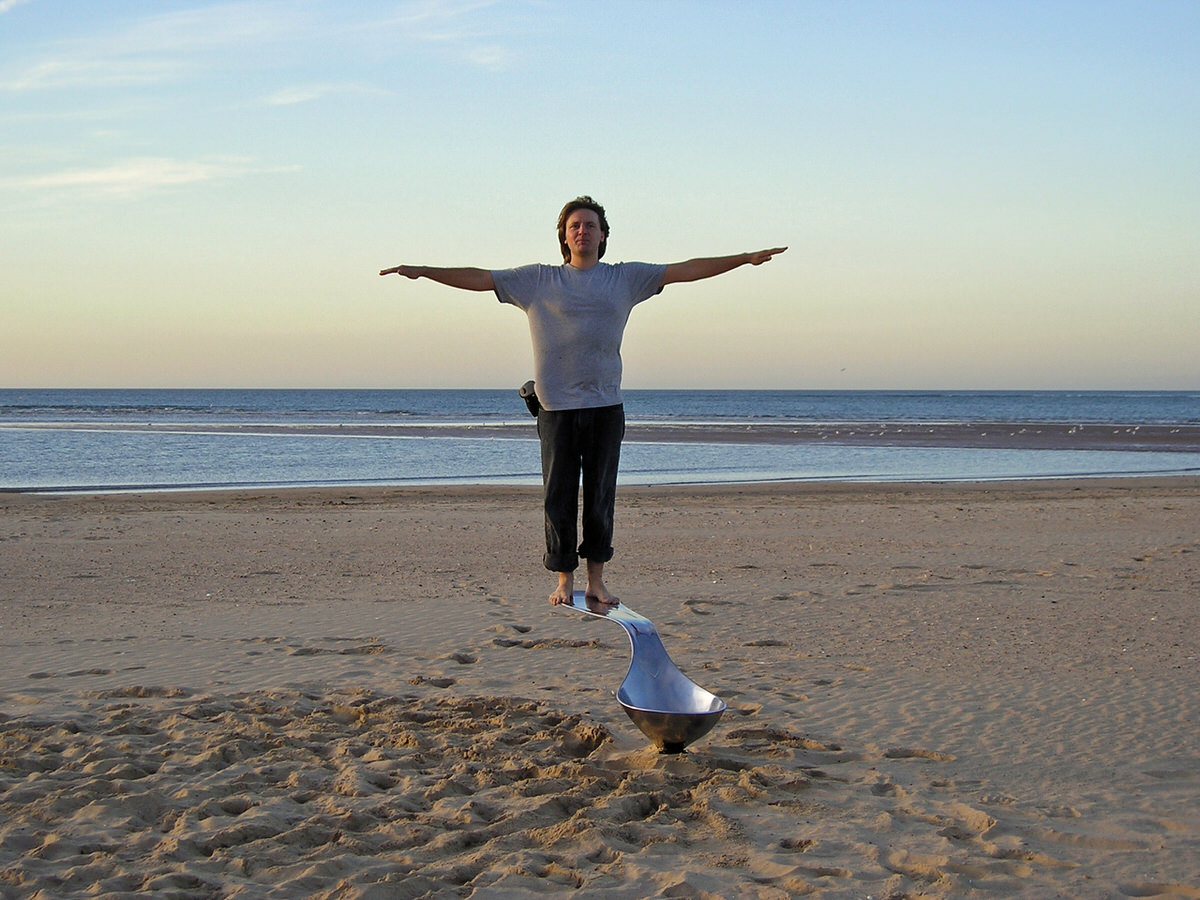



Photographer – Brittany Woodman
“I love to work in the medium of metals for their gravity and endurance, my quest is to morph this inert, cold medium into natural forms, that both feel and respect the echo of nature and exude a tactile epoch of time. I find when shaping the medium, it is often transformed from the original concept into something quite different- a process reminiscent of nature adapting and evolving to achieve form and function. I love to explore themes of nature and science (as both benign and threatening forces), my place within them and the passage of time.
Metal lends itself to emulate the structural form that Nature took millennia to perfect from a leaf, fish, or tree.
Intangible connections intrigue me, particularly in how an entity exists as a component in a hierarchy of collectives as evidenced in Wave, a 10-metre wave of 3,000 fish which at first glance is an installation of great beauty, but litter can be seen scattered among the fish – a stark reminder of the damage currently being done to our planet. The work, for Norwich Cathedral and the Natural History Museum was a meditation of life on earth, from its origins in the very distant past to our own day, and a reminder of the total dependence all life on this planet has on the generative powers of water and an admonition to heed the warnings of nature. Salvation is a fragmented teardrop representing pain but also water which gives rise to life and growth.
I like to use family and my place within it to explore the human condition, the experiences, both joyful and tragic, which form the flux and reflux of life. Whilst feeding my baby, the unassuming spoon suddenly became significant, as a means of giving sustenance and independence. The same tool can be alienating as well as vital, as in an infant’s hands, an adult spoon is huge and out of place. This was the starting point for Spoon Bench, as a stainless steel spoon can be so soulless but when exposed to the hand of manufacture it becomes something soft and tactile, the more it is caressed and worn, the softer it feels. The piece is at odds with its place through its size, yet magically levitating, representing the inner joy when nurturing my first born. My Arbour Metallum tree sculpture was inspired by the need to find shade for my new-born son and my role as a father cradling and protecting my family and my children like the resolute windswept trees on my native North Norfolk coast.
The inspiration for the Serving Ace Meeting Tree for the All England Lawn Tennis Club, Wimbledon was after I was invited to the Championships to watch the game live, and I immediately knew I wanted to try to capture some of the power of the serve. The tennis player seems to stop time-they are prepared and in position, like a drawn bow… silence and peace… they have a lightness, as if levitating in the air, defying gravity with their arm raised…. before they explode the ball down the court. The form of tree that seemed perfect to express this was the windswept tree that has such directional movement in it. From a distance, it is the tree that is most evident, but as one moves closer, the figure becomes more pronounced. Furthermore, as the spectator circles the sculpture masculine and feminine body forms emerge and fade from tree to figure and back again.
Metals have within their intrinsic heart an inner strength, a strength that has been exploited by man since distant time and yet this strength yields so willingly to heat. Exposed to this basic enthalpy of energy it becomes soft, sharp edges become gentle and hardness becomes ductile before submitting to its fluid phase. Finally, such hard materials as stainless steel, bronze, and iron, will vaporise, yield, and disappear in the presence of oxygen, a hew of sparkles and puff, it is gone.
Being sublimated by natures endless forms can be overwhelming, I strive and hope that occasionally, I manage to immortalize a glance of its beauty within a sculptural piece, a glance that feels sincere from every perspective, so as you go round a piece of my sculpture I want you to go on a journey of discovery, and if the realised vision creates a smile, all the better.”
Mark works from his studio located on the family Fruit Farm in the countryside in Norfolk, England just 45 miles from Cambridge and 90miles north of London.
Reed has extensive experience of working in collaboration with public and private organisations including The City of London, The All England Lawn Tennis Club, Wimbledon, Fortnum & Masons, Valentino Garavani, Copelouzos Family Art Museum,Saga Group, PriceWaterhouseCoopers, NHS England, The Princes Trust, The Natural History Museum, Norwich Cathedral and Edelmann and his work can be found in collections on four continents. Her has exhibited widely at Chelsea Flower Show and in sculpture parks and exhibitions in the UK and worldwide.
